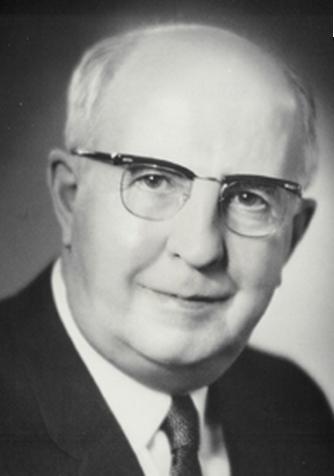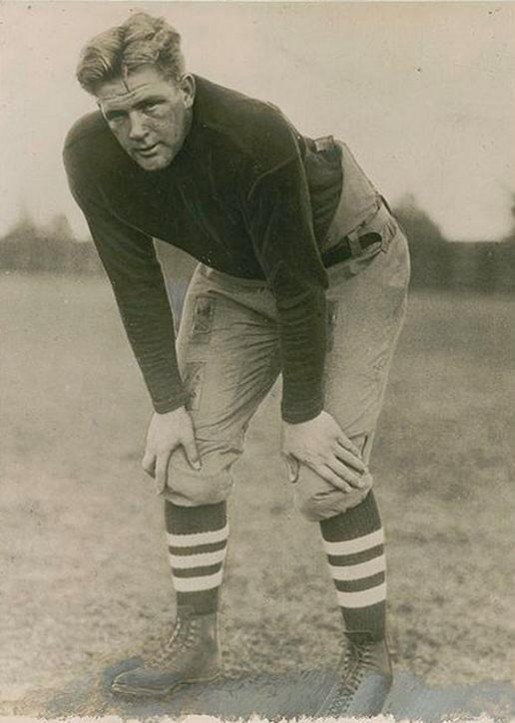How Did a $1 Investment in 1926 Turn Into 10% Ownership of the Minnesota Vikings in 1960?
Here is the latest in a series of examinations into urban legends about football and whether they are true or false. Click here to view an archive of the football urban legends featured so far.
FOOTBALL URBAN LEGEND: A $1 investment by a team manager eventually turned into 10% of the Minnesota vikings.
The early days of the National Football League (NFL) were so much different than the current NFL that they are barely even recognizable to modern fans. So many things needed to go just right for the league to make its way to where it is today. Had it not been for the actions of some early NFL pioneers, there is a very good chance that the NFL would have folded and perhaps we would be following some other league today (the American Football League, perhaps). One of these early pioneers was Ole Haugsrud. Haugsrud owned the NFL franchise in Duluth, Minnesota, a franchise Haugsrud purchased for $1 (I guess you could say 50 cents even, since Haugsrud purchased the team with a partner). That deal in 1926 eventually led to another deal in 1960, where Haugsrud became owner of 10% of the Minnesota Vikings. How, exactly, did those two deals become connected? Read on for a journey into the strange early years of the NFL.
The NFL, as originally constituted in 1920, wasn’t even called the NFL (it was first called the American Professional Football Association before it adopted the NFL name in 1922). Professional football when it began was very much a regional sport, where small pro teams from the same area would face off against each other. In fact, before becoming an “Association,” the league’s first plan was to be a league of just teams from Ohio (and call themselves the American Professional Football Conference). All throughout the early 1920s, pretty much every Mid-Western city of any renown tried to form their own professional football team. In Duluth, Minnesota (birthplace of Bob Dylan!), the pro team was founded in 1921 by hardware store owner, M.C. Gebert, who formed a professional team with help from Dewey Scanlon, a native of Duluth who had played college football at Valparaiso University in Indiana.
After playing just local teams for a couple of years, in 1923 the team, known as the Duluth Kelleys (or the Kelly Duluths, after the store, which was called the Kelly Duluth Hardware Store) joined the NFL.
Coached by Joey Sternaman, the team was about middle of the pack (finishing seventh in the league), but financially it was not working out, so Gebert sold the team. Interestingly enough, he sold the team directly to the players themselves, who ran the team as a co-operative. They needed someone to manage the team, though, so they brought in 25-year-old Ole Haugsrud to become the team manager. Scanlon stayed on as the coach of the team.
For two seasons, the Kelleys only played eight games within the actual NFL, scheduling almost all of their other games as non-league games with other local Minnesota area teams. The NFL games would almost always be on the road, as the Kelley’s home stadium, Athletic Park, was a disgrace, even by mid-1920s standards!
With the team falling deeper and deeper into debt, Haugsrud and Scanlon ultimately purchased the franchise from the players for the sum of $1. This, of course, is misleading since the purchase of team also involved taking on the debts of the team, which were substantial after the two poor seasons. Haugsrud, though, had a plan. A close personal friend of Ernie Nevers, Haugsrud decided to build the 1926 Duluth team around Nevers. The problem was – how do you get Nevers?
Ernie Nevers, you see, was perhaps the finest football player of his era. An All-American at Stanford University, Nevers was called by none other than legendary coach Pop Warner himself, “the football player without a fault.”
Star player Red Grange had left the NFL after the 1925 season to form the American Football League as a rival to the NFL. He saw Nevers as the player that the league could revolve around. He promised Nevers $15,000 for the 1926 AFL season as well as 25% of the gate! Those figures were fairly astronomical for a professional football player in 1926. Nevers, however, was friends with Haugsrud, so he gave him the opportunity to match the offer. He did and so in 1926, Nevers suited up for Duluth.
Haugsrud was so confident in his new player than he actually had the name of the team changed to Ernie Nevers’ Eskimos (most commonly referred to, though, as the Duluth Eskimos, as a number of papers called them at the time). Haugsrud also had a plan – with the knowledge that their home stadium was awful, after just a single game at home to kick off the season, he and the team went on a season-long journey around the country as a perpetual “road” team built around the drama of other cities getting to see Nevers play. Haugsrud gutted the team to pay for this, selling pretty much all of his stars, but also spending some money to pick up the legendary Johnny Blood for the team. Haugsrud’s deal with the non-Nevers players on the team was that they would receive $50 a game if they lost, $60 if they tied and $75 if they won. This was below market even back then, but to make it up to his players, he would schedule as many games as he could. The Eskimos played 14 NFL games in 1926 but played at least eight more games against semi-pro and local teams (Haugsrud would always claim they played 15 more games, but that seems dubious).
The traveling bravado of the Eskimos drew attention all over the country, and there is a very reasonable possibility that had Nevers signed with the AFL instead of Duluth, that the AFL would not have folded after the 1926 season (a season where Grange was the only real star. Grange’s team, the New York Yankees, would be absorbed into the NFL when the AFL folded). Nevers was a great commercial draw, and he was also a great player on the field, as well (the Eskimos played well, going 6-5-3 in their league games). Nevers played nearly every minute of every game. The only time he missed came when a doctor insisted that he sit out a Halloween 1926 game against the Milwaukee Badgers. He sat down for 26 minutes but he could not help himself – with the team down 6-0 he entered the game and eventually threw for a touchdown in a 7-6 Duluth victory. Those 26 minutes would be the only minutes he did not play in 1926. Nevers, of course, wasn’t the only Duluth player playing nearly all the games. While the team had over 20 players in total, they did not travel with that many, typically only traveling with 13 or so players at a time. In fact, their bench was so thin that Haugsrud and Scanlon often would suit up as players just to make it look like Duluth had more players on their bench than they actually did.
The constant wear of playing ever down of ever game on top of all of the traveling eventually took its toll on the team, though, and in 1927, after trying to repeat their 1926 glory, the team fell apart and went 1-8 in league play and not much better in their other games. Scanlon had left the team after the 1926 season and Nevers had taken over as coach.
After the disappointing 1927 season, Haugsrud took the 1928 season off. This was allowed back then, as the NFL understood that some owners just could not afford to play every year. However, there was a tiny little wrinkle here. Nevers’ deal was not with the Duluth Eskimos, but, as it turns out, with Haugsrud himself! It was a personal services contract, so if Haugsrud was not going to field a team in 1928, Ernie Nevers could not play in the NFL either. So after one Nevers-less season, the NFL insisted that Haugsrud get Nevers back into the league. He agreed, and sold the team to Edwin Samandi (or sold it to the NFL, who in turn sold it to Samandi, whichever), who moved the franchise to Orange, New Jersey. Haugsrud, of course, first sold most of the players to other teams, including sending Johnny Blood (who had played for Pottsdale in 1928) off to Green Bay, where he became one of the most famous Packers on his way to a Hall of Fame career. Haugsrud then took a job with the Chicago Cardinals, bringing Nevers along with him (who went right back to being a star player for the Cardinals). Eventually, the NFL ruled that personal services contracts were no longer allowed, so the Cardinals cut ties with Hausgrud.
However, in exchange for (or, perhaps, in honor of) Haugsrud agreeing to bring Nevers back to the NFL, the NFL (well, Chicago Bears coach George Halas, but presumably Halas was speaking on behalf of the NFL) agreed that if the NFL ever had another new franchise in Minnesota, that they would let Haugsrud have the first crack at purchasing it. That came up very quickly, as the Minneapolis Red Jackets (a re-worked version of a previous Minneapolis team, the Minneapolis Marines) joined the NFL in 1929. Presumably since he was going to Chicago with Nevers, though, Haugsrud passed on the opportunity to own part of the Red Jackets (the Red Jackets only lasted two seasons).
Over thirty years later, though, the NFL, in an attempt to squelch the brand-new American Football League (same name as the Red Grange league from the 1920s, but totally different group of owners), offered the new-AFL franchise Minnesota Vikings the chance to join the NFL instead. The ownership group of Bill Boyer, H. P. Skoglund, Max Winter and Bernie Ridder agreed, but the NFL did not forget its promise to Haugsrud, so they gave him a chance to become part of the ownership group. He agreed, and for $60,000, he purchased a 10% ownership interest in the Minnesota Vikings.
Here’s Haugsrud in his later years…

Haugsrud would maintain his ownership right until his death in 1976, by which time the Vikings had become one of the more successful teams in the NFL.
And it all began with a $1 purchase…
The legend is…
STATUS: True
Feel free (heck, I implore you!) to write in with your suggestions for future urban legends columns! My e-mail address is bcronin@legendsrevealed.com






